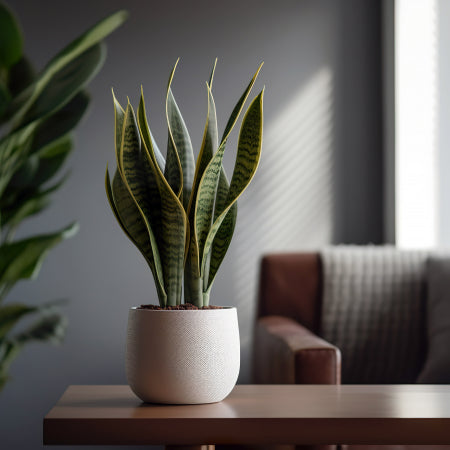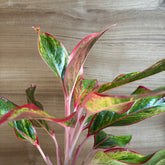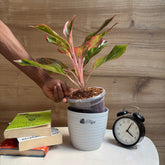Golden pothos is also called Devil’s Ivy because it is almost impossible to kill. Its leaves can grow 3 feet long or more in the wild and will typically grow four to eight inches.
Jade Pothos has solid green leaves and tends to have more compact growth; it typically grows between 30 feet and an average of 18 inches every month.
Manjula Pothos has uniquely shaped leaves with creamy white edges and green centers; the vines can grow 1–10 feet . long and 1-4 feet . wide.
The money plant is popular among plant lovers due to its ease of care, gorgeous leaves, and the idea that it brings good luck and fortune. However, even this tough plant can face challenges that limit its development and attractiveness. This article delves into the distinction between natural aging and actual issues with money plants and offers practical solutions to ensure indoor plant growth.
Ensure that you are not overwatering your plant. Money plants prefer their soil to dry out slightly between waterings. Water only when the top inch of soil feels dry to the touch. Make sure your pot has adequate drainage holes. Stagnant water at the bottom of the pot can cause root rot, leading to yellow leaves. While money plants can tolerate low light, they thrive in bright, indirect sunlight. Adjust the plant’s location if it’s not receiving enough light.
Increase the humidity around your plant by misting it regularly, using a humidity tray, or placing a humidifier nearby. Fertilize your money plant sparingly. Over-fertilisation can lead to salt buildup in the soil, which can burn the leaf tips. Use a balanced, water-soluble fertilizer once a month during the growing season. Use distilled or rainwater if your tap water has high levels of salts or chlorine, which can damage the plant.
Move your plant to a brighter location where it can receive plenty of indirect sunlight. This will encourage fuller, bushier growth. Regularly prune your plant to promote new growth and maintain a compact shape. Cut back long, spindly stems to encourage the plant to grow new branches.
Ensure you are not overwatering your plant. Water only when necessary, and allow excess water to drain away. Use a well-draining potting mix and a pot with drainage holes. If root rot occurs, remove the plant from the pot, cut away the affected roots, and repot it in fresh, dry soil.
Feed your plant with a balanced fertilizer during the growing season to provide the necessary nutrients. Ensure the plant is getting adequate light. If natural light is insufficient, consider using grow lights. Follow proper watering practices. Both overwatering and underwatering can impede growth.
Money plants do well in bright, indirect light but can tolerate low light conditions. Avoid direct sunlight, which can scorch the leaves. Use a well-draining potting mix. A mix designed for indoor plants or a combination of potting soil, perlite, and peat moss works well. Water your money plant when the top inch of soil feels dry. Ensure the pot has drainage holes to prevent water from accumulating at the bottom. Money plants prefer high humidity, and temperatures such as 50% and higher in dry environments increase humidity around the plant. Wipe the leaves with a damp cloth to remove dust and help the plant breathe better. Check your plant regularly for signs of pests or disease. Early detection and treatment can prevent major problems.
Yellowing money plant leaves can be caused by overwatering, underwatering, poor drainage, low humidity, insufficient light, nutrient deficiency, pests, or natural aging. Ensure proper watering, drainage, light, and pest control.
To fix brown tips on your money plant, adjust watering, increase humidity, check for pests, avoid direct sunlight, and trim the damaged tips.
Regularly trim off yellowing or dead leaves and prune back long stems to encourage new growth and maintain the compact shape of your money plant. Use clean, sharp scissors or pruning shears for the best results.
Money plant leaves droop due to underwatering, overwatering, poor drainage, low humidity, or temperature stress. Ensure proper watering, drainage, humidity, and a stable temperature.
To prevent and treat pest infestations on your money plant, inspect leaves regularly, clean them with a damp cloth, use insecticidal soap or neem oil, isolate infested plants, and maintain proper watering, light, and humidity.







